The vision of SunsHyne Corridor
SunsHyne Corridor is a strategic infrastructure initiative promoted by a group of five leading European gas transmission system operators (TSOs) – Snam, TAG, Eustream, NET4GAS, OGE – which ambition is to enable green hydrogen flows from North Africa to Germany supplying and crossing Italy, Austria, Slovakia, and the Czech Republic.
The initiative reflects the spirit of the RepowerEU Package and puts forward a pathway to realize the plans set out in the European Hydrogen Backbone. The ambition is to repurpose existing natural gas pipelines and realize new pure H2 transport infrastructure where needed, to enable a significant part of the 10 Mt of green hydrogen that the EU is planning to import from third countries.
SunsHyne
Corridor
key facts
for 2030
The SunsHyne Corridor opens the gateway for low-cost hydrogen from North Africa to Europe, enabling the transport of this green energy carrier to Europe’s main demand regions.
3,400
total length (km)
70
production potential in North Africa (TWh)
85%
repurposed pipelines
106
estimated H2 import requirement (TWh)
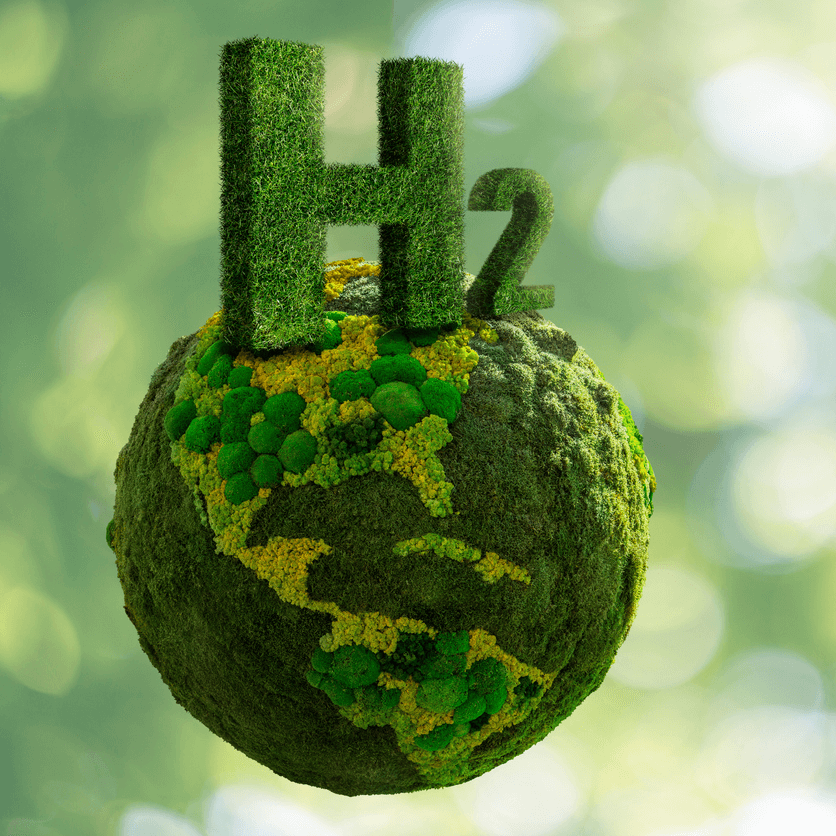
The availability of transport infrastructure is key to enable integration of demand along the route with the extensive hydrogen production potential in North Africa. Dedicated hydrogen pipelines are by far the most economical and scalable way to transport the gas. Repurposed pipelines, where existing natural gas pipelines are retrofitted to carry hydrogen, allow for further cost reduction in hydrogen transport.
Pipelines are also crucial for securing large-scale supply for all involved countries, including Germany, where demand in 2030 is expected to be larger than 100 TWh and as such by far exceeding potential domestic supply. Along the SunsHyne Corridor route, such gap between estimated demand and domestic production is expected to be around 106 TWh in 2030 and 363 TWh in 2040. The SunsHyne Corridor will also connect future production areas along the route.
Due to its strategic location the SunsHyne Corridor will not only enable the development of a common hydrogen market in Italy, Slovakia, the Czech Republic and Germany but also in the wider CEE (Central Easter European) region, supporting competition and security of supply. Once implemented, this import route will be complementary to other existing or planned H2 routes across the whole H2 value chain in the EU, which are all integral parts of the European Hydrogen Backbone.
Project Timeline
2021-2022
1st phase of pre-feasibility study
December 2022
PCI and PMI applications
2030
Project Commercial operation start
SunsHyne Corridor infrastructure parts
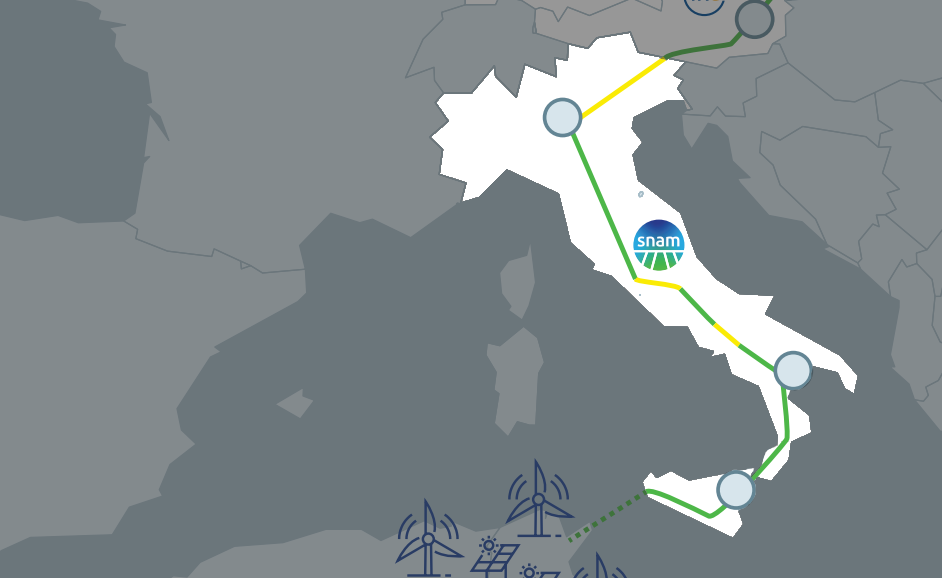
Snam
The Italian hydrogen backbone will be stretching all the way from the entry point in Sicily to the export point with Austria. The H2 infrastructure will be composed of around 2300 km of pipelines – mainly repurposed – and up to 500 MW of compressor power. The project has an import capacity of circa 450 GWh/day from North Africa and a capacity to export circa 170 GWh/day to Austria and beyond.
Further details are available in the Dedicated section of Network Development Plan (only in Italian available).
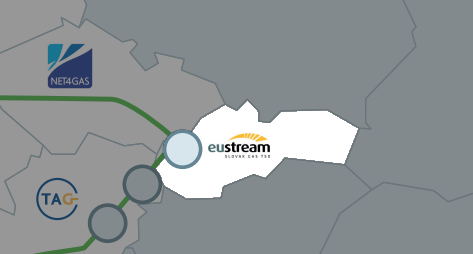
Eustream
Eustream prepares a set of H2 system repurposing projects, inter alia, consisting of the route from Ukraine to the Czech Republic and the route from Ukraine to Austria and Germany. Certain parts of both projects, connecting IP Baumgarten at the SK/AT border and IP Lanžhot at the SK/CZ border represent the part of the SunsHyne Corridor initiative at the territory of Slovakia.
Both projects representing routes from Ukraine to the Czech Republic and from Ukraine to Austria are parts of European and the national Ten-Year Development Plan 2023-2032 Network Development Plans | Eustream (available only in Slovak).
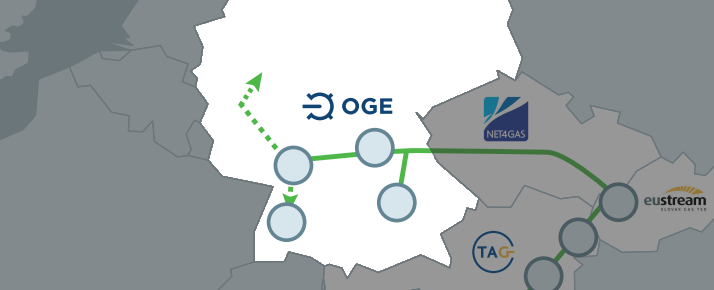
OGE
With its H2ercules project, OGE aims to create a large hydrogen infrastructure with more than 2,000 km of pipeline for Germany by 2030. For the most part, this will mean converting pipelines from the existing natural gas network to hydrogen. The southern part of the H2ercules pipeline network consists of the hydrogen infrastructure from the French/German border to the border of Germany and the Czech Republic using infrastructure jointly owned and commercially operated by GRTgaz Deutschland and OGE. With its connections on the Eastern end of the planned infrastructure the H2ercules pipeline network enables the hydrogen import via the SunsHyne Corridor from Northern Africa and also from Ukraine, and the Baltic region.
Further details are available on our website: https://www.h2ercules.com/en.
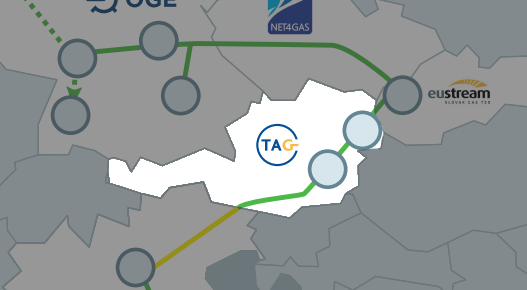
TAG
TAG’s “H2 Readiness of the TAG pipeline system” project connects the H2 pipeline at the Italian-Austrian border (Arnoldstein) with the ones at the Austrian Slovakian border (Baumgarten) with length of 380 km. The project consists of repurposing 1 out of 3 existing natural gas pipelines of TAG’s system for 100% hydrogen and the construction of the required compressor stations. The system is optimized to transport hydrogen in “H2 forward flow direction” with an import capacity to Austria of circa 170 GWh/day, but can also be operated in reverse flow.
More information could be found on the website: www.H2-Readiness-TAG.at, or in the Coordinated Network Development Plan of the Austrian market area manager AGGM: CNDP – AGGM – Austrian Gas Grid Management AG.

NET4GAS
The infrastructure contribution of NET4GAS to the SunsHyne Corridor stretches from Lanžhot on the Slovak-Czech border to Waidhaus on the Czech-German border. Implementation is planned by repurposing one out of three gas pipelines of a large-diameter parallel systems (DN 1000+). The approx. 400 km long hydrogen pipeline without compression enables a capacity of 144 GWh per day.
The project is part of European and national TYNDP under the name of Central European Hydrogen Corridor, Czech part. Development plans – NET4GAS (available only in Czech)

